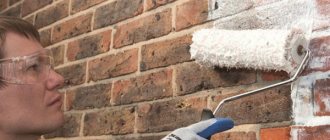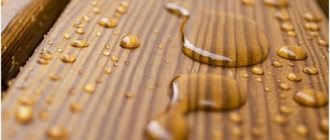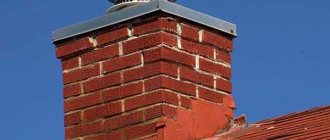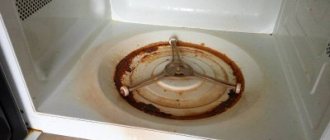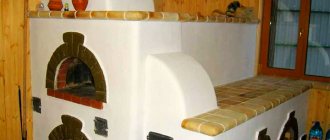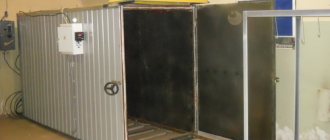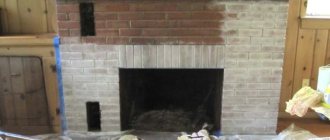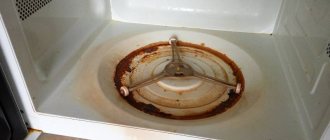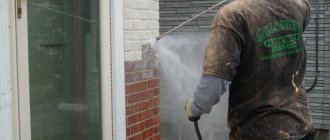Types of paint
Here is a list of some of the leaders in this type of product:
- Paint for sauna stoves made of metal “Termal” from Finnish, produced in black or silver from alkyd resin. The coating is guaranteed not to be damaged for 3 years. When the stove surfaces are heated to 2000, the paint completely hardens within 60 minutes. Bottled in containers of 330 g.
- Hansa paint has high heat-resistant properties and is available in both aerosol cans and liquid form. Available in 16 shades of color. Does not lose its properties when heated to 8000, can be applied to stainless steel.
- One of the best representatives of silicone enamel, which can withstand temperatures up to 6000, is the domestic coating of the Kudo brand. Available in aerosol cans with a capacity of 520 mg.
- Paint produced only as a spray coating with heat resistance up to 6500 - “Bosny”. During use it does not crack, does not change color and does not fade. It is used to cover glass, metal and ceramic surfaces. Packaged in 400 mg cans. For glass it is produced with heating temperatures up to 2000.
- Hammerite paint protects steel surfaces and can be applied over rust. When preparing, it is not recommended to use gasoline or diesel fuel as solvents. Withstands heating up to 6000. Apply to the surface using a roller and brush in 1 layer, immediately painting the surface of the structure.
- ELCON enamel has high anti-corrosion and heat-resistant characteristics. Withstands heating up to 8000 and sudden temperature changes. Available as aerosol paint in 0.5 liter cans and bottles.
The main condition is that heat-resistant paint for a sauna stove should not crack, lose color or decompose under the influence of high temperatures.
Painting an iron stove
High temperature, excess humidity, cycles of alternating heating and cooling, all this affects the metal structure - actively destroying its surface. It is clear that paint and varnish materials must withstand all this without losing their physical properties, maintaining an aesthetic appearance and protecting the metal from corrosion.
What kind of paint
Heat-resistant silicone enamel is well suited. Its abbreviation begins with the letters “KU”. Next come the numbers. There are brands that remain resistant to temperatures of six hundred to seven hundred degrees. In addition, heat-resistant silicone enamel reliably tolerates moisture, steam and cycles of sudden heating and cooling. In addition, the influence of high temperatures improves the adhesion index to the substrate.
There are also special fire-resistant paints. However, their purpose is to protect or maximize the time before the surface ignites. Therefore, such paints are not designed to create a particularly aesthetic appearance. They are certainly effective, but the price...
“ Important, very important! When choosing thermal paint for stoves, read the certificate. Check the name with that indicated on the packaging and the relevance of the expiration date. Make sure that the product is specifically designed for heat-resistant coating. Counterfeit or expired products are fraught with serious consequences. No certificate - don't buy. This is not to paint a street fence, so you can’t get away with just embarrassment in front of your friends and neighbors. Here is the safety of health and life. The consequences of a careless choice are the release of toxic substances when heated and the risk of fire in a closed room. Strong arguments?
The “favorite” color covering most stoves is black or close to it. This is due (and not without reason) to the fact that such a color scheme provides better heat transfer. Well, maybe someone remembers the term “ absolutely dark body” (this does not apply to people from the African continent). Therefore, most heat-resistant paints are dark in color. By the way, there are enamels that can be applied at negative temperatures. This expands the usability.
“For information: the temperature inside the firebox of an average sauna stove does not exceed 800°.”
Preparatory stage: If there are traces of dust or dirt on the surface, remove. Wash off with soapy water, scrub, etc. After that, degrease the surface. Acetone and white spirit are suitable for this. If there is rust or scale, carefully brush it with an iron brush, sand it and treat it with a solvent. Wait until completely dry. When using organosilicon enamel (KO), use “classic” solvent, such as P-646 and similar analogues, or turpentine as a solvent.
“If the stove is new, “freshly cooked” - heat it. This will allow you to “burn out” the remaining fats, grease and other debris accumulated in the pores and microshells, from where it is problematic to get them out with an ordinary rag.”
How to paint
The paint is applied in 2-3 approaches. Try to make a thin layer, this will prevent the formation of smudges. Before proceeding to the next layer, test for tack. Complete drying of the paint occurs during the first firing of the furnace, and at 150-200° its polymerization begins, or, more simply, sintering. After which, it gains its maximum strength.
“During the first fire, fresh stove paint can produce a certain chemical odor. This is a natural process and when reheated, it should not happen.”
Which one is better to use?
How to paint a metal stove in a bathhouse? To do this, it is necessary to buy heat-resistant or organosilicon enamels, varnishes that can withstand heating up to 6000. The layer must maintain its solidity and prevent the formation of rust on the structural steel from which inexpensive bath “units” are made.
As a rule, dark colors are used, even black. It increases the heat transfer level of the furnace. Aluminum based paint is not recommended. The most in demand are organosilicon enamels from Russian and foreign manufacturers. It contains:
- organic resin;
- aluminum powder;
- organic radicals;
- silicon base and oxygen.
Expert opinion
Pavel Kruglov
Stove maker with 25 years of experience
When purchasing, pay attention to the purpose of the heat-resistant paint. It is produced for processing parts from fire, dry steam, steam and metal. If the marking indicates “KO” and the number 8, this is silicone enamel that can withstand temperatures of 8000.
Now let's look at specific brands:
- The leader among domestic brands is Cetra. Available for different heating temperatures. Black enamel can withstand heating temperatures up to 9000.
- Another heat-resistant paint, produced in cans and having good properties at a low price, is heat-resistant enamel of the Kudo brand.
- Among foreign manufacturers, we can highlight the Finnish “Thermal” from.
How to paint a metal stove in a bathhouse from the inside? For this it is better to use fireproof paint. Its only disadvantage is its high price.
Painting an iron stove in a bathhouse
How do you paint an iron stove in a bathhouse? Why do this at all? How to apply paint correctly? The answer to these questions is often sought by owners of bathhouses with metal stoves. Such a stove is inexpensive, you can weld it yourself - this is the reason for its popularity.
The importance of painting the stove
Do not forget that metal is susceptible to corrosion, and in order to increase the life of the stove, you need to fight rust. The easiest and most effective way is to paint the iron. While in a bathhouse, a metal stove is exposed to the following factors:
- cold and warm water;
- heat;
- change in size due to high temperature;
- steam.
In addition, painting is necessary to give an attractive appearance. “Bare” metal looks ugly and spoils the overall impression. But how to paint an iron stove? After all, it is subject to high temperature and humidity; ordinary paint will not work.
Heat-resistant paints for ovens
Indeed, in order to paint the stove, you cannot use traditional options. After a few kindlings, the usual painting material will peel off or burn. Therefore, the stove is painted with special heat-resistant paint or blued.
When selecting a material, it is necessary to take into account that it must be certified and of high quality. Cheap paint can cause toxic substances to be released when the stove heats up. The product documentation must indicate the maximum temperatures and substances that may be released.
You should not save money by buying cheaper uncertified material, because your health depends on it.
Heat-resistant paints are based on silicone or other substances containing a lot of silicon. At high temperatures, polymerization processes begin, which causes the paint to sinter into a homogeneous film. The heat-resistant material copes well with the constant expansion of metal and other influences.
Let's look at some types of paints in more detail:
- heat-resistant paint KO-8101; has a low cost, the manufacturer promises a service life of up to 25 years (15 of which are guaranteed);
- organosilicon varnish KO-85; protects well from moisture and corrosion, withstands temperatures up to 250 degrees (in some cases this may not be enough);
- paints and enamels KO-868t; used for furnaces that heat up to 600 degrees, have few colors (primary shades);
- enamel KO-822; copes with temperatures up to 800 degrees, high cost.
Depending on the temperature in your bath, the required color and other characteristics, choose the right material. Don't hesitate to ask the seller or other people for reviews about the product.
Please note that the level of heat transfer depends on the roughness and color of the surface. A smooth and light surface gives off minimal heat, which will increase your costs. You should not use white or aluminum paint for these purposes.
Blueing of a metal furnace
Burnishing is a chemical treatment of the surface of iron. Using a similar method, they protect the metal from rust and give it a certain decorative look.
To burnish metal you need:
- Clean the surface until a characteristic shine appears. The service life of the decorative layer depends on its purity.
- Remove oxides. To do this, you can dilute 4 grams of butyl alcohol and 150 grams of phosphoric acid in a liter of water.
- Remove any remaining acid. Dilute 50 grams of laundry soap in a liter of water and wash the surface with this solution.
- Heat the oven to 150 degrees.
- Apply caustic soda. The preferred method is spraying.
Once the surface has dried, the iron will be protected from corrosion.
Video: what is caustic soda and where to get it?
Painting a sauna stove
The main advantage of painting is the ability to choose any color and shade, thereby creating a unique appearance for the bathhouse.
To paint a sauna stove you will need the following materials and tools:
- degreaser;
- soap solution;
- protective elements (suitable clothing, respirator, glasses, gloves);
- container with material;
- rags for cleaning and film to protect surrounding objects.
It is better to apply anti-corrosion paint to the stove using a spray can.
Directly for painting, follow these steps:
- Wash the surface and degrease it.
- Fill the can with anti-corrosion paint.
- Shake it well.
- Spray paint from a distance of 30 centimeters.
- After drying, apply another layer.
The metal stove is painted in several layers, the paint does not dry for long, no more than 30 minutes. While performing work, do not forget about safety precautions, often go out into the fresh air and ventilate the room.
Coloring instructions
Having learned how to paint the stove in the bathhouse, you can purchase paint and prepare the stove for painting.
Tools and materials
To do the work yourself you will need:
- paint, preferably in aerosol cans;
- if you use liquid paint in cans, you will need to purchase a roller and brush;
- sandpaper to remove a layer of rust;
- metal brush;
- when cleaning large areas, use a grinder;
- solvent for degreasing parts;
- for painting you can use a spray gun and a compressor, especially with large dimensions of the structure;
- rags;
- paper or old sheets to protect the surface of walls and floors when painting.
Having dealt with the question of how to paint an iron stove in a bathhouse and having prepared the materials necessary for the work, you can begin to carry out the preparatory work.
Surface preparation
To do this you will need to perform a number of simple works. But surface preparation must be approached with full responsibility; this determines how the paint will adhere to the metal and how long its layer will withstand high temperatures:
- Using a metal brush, we clean the stove from adhering dirt, soot and rust;
- Clean the finished surfaces with fine sandpaper. This work will make the surface smooth, remove minor scratches and irregularities;
- sweep and remove dust from the stove parts;
- Having generously moistened a rag with solvent, degrease all surfaces;
- If the stove has parts made of stainless steel or those that have undergone galvanic treatment, there is no need to paint them. Therefore, we will apply a layer of grease or other lubricant to the parts;
- cover the surface of the floor and walls next to the heater, paper or cloth.
Paint application algorithm
We know how to paint an iron stove in a bathhouse, the necessary preparatory operations have been completed, now you can move on to the main stage of work. This will not require much time and effort. All work is carried out in the following sequence;
- open and stir the paint well. If it is thick, it can be diluted with a solvent suitable for this enamel. Be sure to read the instructions and dilute the paint only with the specified mixtures. Otherwise, you'll just throw away a can of expensive paint;
- if a spray gun is used to apply the layer, the paint is diluted to a more liquid state, then poured into the spray gun through a painting sieve or the wife’s old tights;
- first apply a layer to all inconvenient places and edges of the oven and only then treat the surfaces, slightly overlapping the previous layer. When painting with a brush, the work is done in the same way;
- The paint is applied in 1 layer, so do not allow any gaps, painting all surfaces evenly.
Work is done. Now leave the oven until the enamel hardens completely. It is important to close all doors and windows to prevent dust from entering the room. For some paints you will need to light the oven; they only harden when warmed up. Therefore, carefully read the instructions and strictly follow these rules.
How often should I paint in the future?
The paint for an iron sauna stove will last for the period specified by the manufacturer. You need to pay attention to this characteristic when purchasing enamel.
Expert opinion
Pavel Kruglov
Stove maker with 25 years of experience
The minimum period for high-quality surface coating for most manufacturers is 3 years. But the frequency of use of the stove and its operating conditions are of no small importance.
In any case, if the stove is made of thin metal, it may fail before the paint coating of the surfaces. Paint is a short-lived coating, so every bathhouse owner should be prepared for repeated work to protect the stove.
Is it possible to achieve a durable protective layer on the surfaces of the heater? Yes, in this case, performing a simple galvanic method of protecting the metal will help.
How to paint the stove
Often in country houses they use a stove, which is heated in the traditional Russian way. And then the owners begin to think about how they can update and paint the stove so that it is not only practical, but also beautiful.
The most common and simplest way is to whitewash the stove with chalk or lime. This method has been used since ancient times. If the surface of the stove is uneven and has some defects, it must be plastered in advance (you can coat the seams between the bricks with a clay solution.
In order to prepare plaster, you need to mix asbestos and clay. This mixture must be applied to a heated stove. Once the plaster is dry, you can begin painting.
How to paint a brick stove - chalk or lime - is up to you. Both materials have their pros and cons.
In order to prepare a chalk solution, you need to put pieces of chalk in a deep container and fill them with water so that the chalk is completely covered. Leave to steep for about an hour. At this time, you need to prepare a solution consisting of animal glue and water in a ratio of 25:1, respectively. When the chalk solution is ready, mix it with the second one to the desired consistency (a drop of solution dropped onto the vertical surface of their glass should slide down 2-2.5 centimeters.
As you know, whitewash often gets dirty. To prevent this from happening, you need to add salt to the water. (50-100 grams of salt is enough for 1 bucket of water). And so that the whitewash does not turn yellow over time, you can add a little blue to the chalk solution (about 60 grams per 10 kilograms of chalk). It is necessary to paint in 2 layers. The second layer can be applied only after the first has completely dried.
Many people prefer lime to chalk, because it’s so easy to paint a stove with it. Pour one kilogram of freshly slaked lime with water (1.5 liters). Add 1 dessert spoon of drying oil, 25-30 grams of blue for a blue tint and 5 grams of salt. Mix everything thoroughly and apply to the stove in 2 layers. In this case, the second layer of whitewash must be placed on top of the first while it is still wet.
If plastering work is not for you, you can use the same lime, but thicker, like thick sour cream.
If the whitewashed stove does not fit into the interior of the room, you will have to use enamel or oil paints, which have a variety of shades, so you can choose the ideal combination of colors of the stove and the walls.
But what paint to choose is not an easy question.
First, carefully study the properties and composition of enamel paints. Their main property is heat resistance. Also, the composition should contain a minimum amount of chemical dyes. It is better to purchase imported products, on which the manufacturers honestly indicate whether the stove will turn yellow over time or not. Many such enamels can withstand temperatures up to 600 °C. These paints are applied to the stove in several layers.
Do not buy aluminum-based paints, as well as paints of shiny shades - they will reduce the amount of heat from the stove.
Experts also do not recommend using oil paints, justifying this by the fact that due to high temperatures, the drying oil included in their composition will begin to burn, and as a result, an unpleasant odor will appear.
You can also use stain, heat-resistant varnish, or transparent paint to paint the stove. But these are less common options. Some owners of country houses themselves prepare a mixture of PF varnish, turpentine and dry gouache.
Blueing
It’s better than painting a stove in a bathhouse several times during its service life, using the method of bluing metal with your own hands at home. In this case, the parts are covered with a thin layer of black protection and look more attractive than those treated with heat-resistant enamel. But when working with chemicals, do not forget about protective equipment. The work is carried out in several stages:
- Using a metal brush and then fine sandpaper, we bring the surfaces of the parts to a steel shine. This operation is very important; the quality and durability of the protection depends on it. Therefore, there is no need to rush.
- We degrease and remove oxides from the metal. We use the solution:
- butyl alcohol – 4 g;
- phosphoric acid – 150 g;
- water 1 l.
- Mix the ingredients and process the metal.
- After the layer of solution has dried, it is removed using a solution of laundry soap and water.
- Then the surfaces must be heated to 1500 and caustic soda applied to them using a spray gun.
After the surfaces have cooled, you receive a sauna stove with a durable decorative finish.
Painting a brick oven
Preparatory stage: If there are minor defects (depressions, bumps, potholes), first plaster and level, and cover the seams with a clay solution. You can learn how to prepare a good clay solution from the corresponding article, which is on the blog...
Plaster is made from clay and crushed asbestos. The resulting mixture is carefully applied to a well-heated stove.
How to paint: The two most popular proven folk methods are lime or chalk. The third method is again heat-resistant paint, which is also used for iron sauna stoves.
Cooking and painting with chalk
- Pour the pieces of chalk into a container (bucket, basin), fill with slightly warm water so as to cover the surface and leave for at least one hour;
- In another container, mix animal glue with warm water in a ratio of 25:1. Animal glues include gelatin, casein, albumin, and bone.
- Mix both solutions and bring to a homogeneous consistency. “To check the quality of the solution, drop it on a piece of glass or mirror placed vertically. If the density is normal, then the droplet will slide down by 2-3 cm.”
- Apply two or three layers. Each subsequent one, only after the previous one has dried. “For a more “clean” whiteness, you can add a tablespoon of blue to a bucket of the finished solution. It will remove some of the yellowness.”
Cooking and painting with lime
- Solution proportions: 1 kg of lime / 1.5 liters of water at room temperature / 1 tbsp. spoon of drying oil / 25-30 grams of blue / 1 tbsp. spoon of salt. Mix. “The most durable whitewash is made from freshly slaked lime, and salt is added to make the lime coating less dirty.”
- Apply in two or three layers. Unlike whitewashing with chalk, each subsequent layer of lime whitewash is applied to the wet previous one. “If the stove in the bathhouse was previously painted with chalk, and you intend to use lime (and vice versa), the surface must be thoroughly cleaned of old paint.”
How to coat
In order for enamel or paint to stick well and for a long time on the metal surface of the stove, it is not enough to choose the appropriate composition. It is necessary to strictly adhere to the technology when applying it. All the necessary information is on the packaging, but the principle is the same for any product.
Surface cleaning
Dust, dirt, rust, old coating and any other layers will not allow the paint to adhere well to the surface and adhere to it. They need to be removed.
- First, they use a metal brush to remove obvious contaminants and loose rust.
- Then the surface is brought to a shine with a drill with abrasive attachments or sandpaper.
Cleaning metal from rustSource yandex.net
- The next step is to remove dust using a soft broom or vacuum cleaner and damp wiping.
- The dried metal is degreased using a solvent recommended by the manufacturer. If there is no such recommendation, you can use white spirit or solvent P 646.
Solvent 646 does not cause metal corrosionSource artikaluga.ru
Painting
The coating is applied to the prepared surface immediately after it has dried, so that dust does not have time to settle on it. The painting method depends on the type of paint. If it is an aerosol can, it is advisable to cover all surfaces adjacent to the stove with a rag or film, and use a protective mask when working. Before starting staining, shake the can vigorously for 1-2 minutes.
Before painting a metal stove with regular paint, it must be thoroughly mixed and, if necessary, diluted with the product specified in the instructions. Other products may be incompatible with your paint and will ruin it.
The dyeing process itself is standard.
- The coating is applied evenly, without gaps.
- Before applying the second layer, you need to allow time for the first to set.
- The second layer should overlap the previous one in the transverse direction.
Painting with a spray gunSource bget.ru
The instructions may also contain special recommendations. For example, some silicone enamels acquire the required strength only when heated, so the oven must be melted immediately after painting. Other compositions require several hours or even days to dry normally, during which time the oven cannot be used.
But almost all enamels emit an odor when heated during the first time after application. Therefore, it is recommended that a freshly painted stove be heated 2-3 times thoroughly so that all volatile substances evaporate.
While the paint is drying, it is advisable to protect the oven from moisture and dust, so it is better to do painting work indoors. If this is not possible, you should choose a cool day without precipitation or wind.
After painting, even homemade stoves look very decent Source 24aul.ru
If everything is done correctly, the coating will last no less than the warranty period stated by the manufacturer
It ranges from 3 to 15 years, and you also need to pay attention to this parameter when choosing enamel
